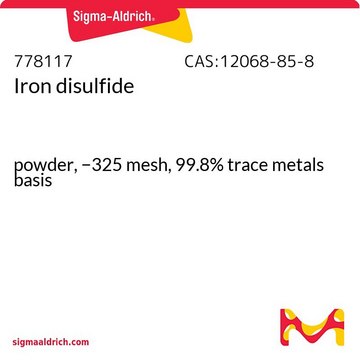37-0480
Zinc oxide
SAJ first grade, ≥99.0%
Se connecterpour consulter vos tarifs contractuels et ceux de votre entreprise/organisme
About This Item
Formule linéaire :
ZnO
Numéro CAS:
Poids moléculaire :
81.39
Numéro MDL:
Code UNSPSC :
12352302
ID de substance PubChem :
Essai:
≥99.0%
Qualité:
SAJ first grade
Forme:
solid
Produits recommandés
Qualité
SAJ first grade
Essai
≥99.0%
Forme
solid
Pertinence de la réaction
reagent type: catalyst
core: zinc
Disponibilité
available only in Japan
Température de stockage
15-25°C
Chaîne SMILES
O=[Zn]
InChI
1S/O.Zn
Clé InChI
XLOMVQKBTHCTTD-UHFFFAOYSA-N
Vous recherchez des produits similaires ? Visite Guide de comparaison des produits
Application
Employed in the preparation of NaZnSiO3OH, a novel chiral framework material which has potential application in ion exchange, adsorption or catalysis.
Mention d'avertissement
Warning
Mentions de danger
Conseils de prudence
Classification des risques
Aquatic Acute 1 - Aquatic Chronic 1
Code de la classe de stockage
13 - Non Combustible Solids
Classe de danger pour l'eau (WGK)
WGK 2
Point d'éclair (°F)
Not applicable
Point d'éclair (°C)
Not applicable
Faites votre choix parmi les versions les plus récentes :
Déjà en possession de ce produit ?
Retrouvez la documentation relative aux produits que vous avez récemment achetés dans la Bibliothèque de documents.
A Ra Kim et al.
Journal of biomedical nanotechnology, 9(5), 926-929 (2013-06-28)
Our innate immunity is composed of several integral leukocytes including neutrophil, NK cell, macrophage or so. They are usually known to produce reactive oxygen species (ROS), in order to induce cell damages by these oxidizing reagents, and finally disrupting mitochondrial
Xiaolong Li et al.
Journal of nanoscience and nanotechnology, 13(8), 5859-5863 (2013-07-26)
In this study, we present the synthesis of ZnO nanowire by hydrothermal process through reutilization of sludge from soy sauce wastewater electrochemical treatment. The influences of floc content and caramel pigment concentration on the morphologies of ZnO were studied. The
Long Giang Bach et al.
Journal of nanoscience and nanotechnology, 13(1), 694-697 (2013-05-08)
ZnO nanoparticles were covalently wrapped by polystyrene (PS) through surface thiol-lactam initiated radical polymerization using the grafting from approach. The surface of ZnO nanoparticles was initially modified by 3-mercapto propyltrimethoxysilane to afford thiol functionalized ZnO nanoparticles (ZnO-SH). The controlled radical
Hyeong Pil Kim et al.
Journal of nanoscience and nanotechnology, 13(7), 5142-5147 (2013-08-02)
Solution processed cathode organic photovoltaic cells (OPVs) utilizing thin layer of ZnO with 27% increase in power conversion efficiency (PCE) to control devices have been demonstrated. Devices without the presence of ZnO layer have much lower PCE than the ones
Dadong Guo et al.
Journal of nanoscience and nanotechnology, 13(6), 3769-3777 (2013-07-19)
Nanomaterials, including zinc oxide (ZnO) nanoparticles, are being developed for a variety of commercial products. Recent reports showed that cells exposed to ZnO nanoparticles produced severe cytotoxicity accompanied by oxidative stress and genotoxicity. To understand the possible mechanism underlying oxidative
Notre équipe de scientifiques dispose d'une expérience dans tous les secteurs de la recherche, notamment en sciences de la vie, science des matériaux, synthèse chimique, chromatographie, analyse et dans de nombreux autres domaines..
Contacter notre Service technique





